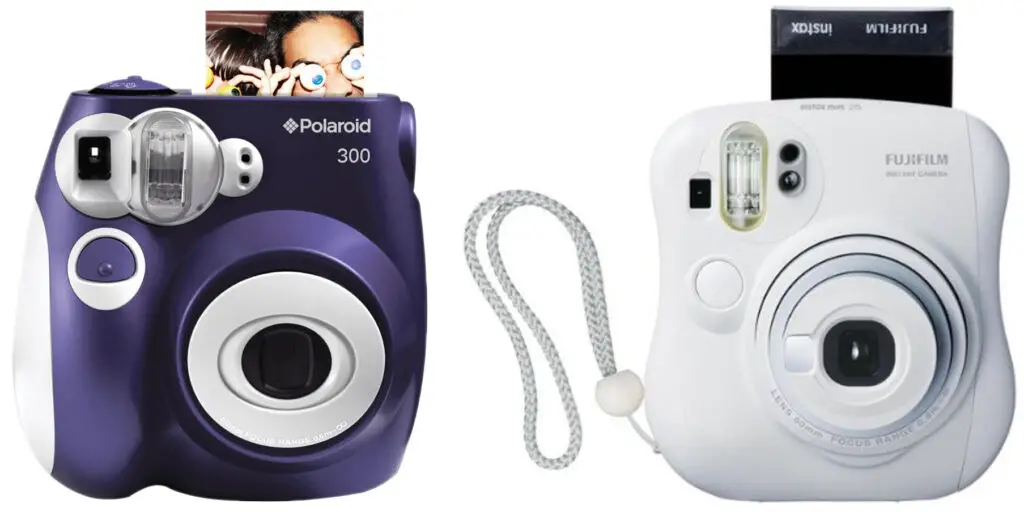Instant film is more popular than ever and even better than it was before! Although Polaroid, the company that originated instant camera and film technology has returned, leading the way is Fujifilm’s Instax Instant cameras and films.
Instax film is an instant film, similar to Polaroid Instant film, that develops within 90 seconds and doesn’t require special equipment or chemicals like traditional camera film. Instax film is manufactured by the company Fujifilm and is used by their Instax line of instant cameras. Instax film (and the corresponding cameras) comes in three varieties, instax wide film which has a 2.9 x 3.4 inch image size, Instax square film which has a 2.4 x 2.4 inch image size, and Instax mini which has a 2.4 x 1.8 inch image size. Instax film also comes in a variety of different colors and styles. Instax instant film is cheaper, easier to find, and more consistent than Polaroid film.
That’s just a quick introduction to Fujifilm’s instant photography products. However, there’s a lot more information where that came from, so keep on reading!
The History of Instant Film
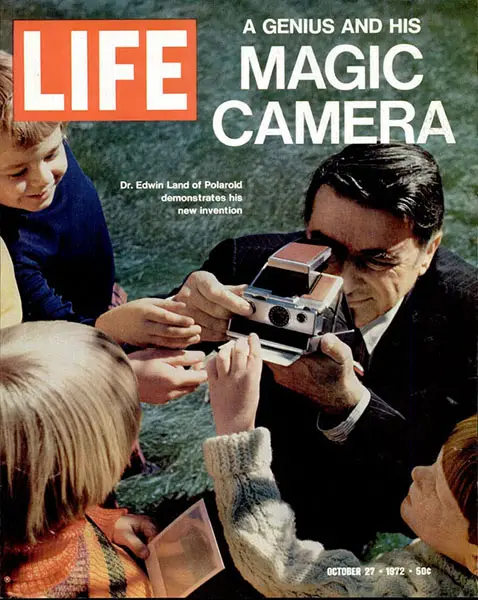
Edward Land, the American Inventor who was a huge inspiration for Steve Jobs , was taking pictures with his daughter when she asked him why they couldn’t see the pictures right away. Land thought that was a good question, and he began working on a camera that would hold film that could be developed instantly. In 1948, Land unveiled the Polaroid Land Model 95 Camera
, was taking pictures with his daughter when she asked him why they couldn’t see the pictures right away. Land thought that was a good question, and he began working on a camera that would hold film that could be developed instantly. In 1948, Land unveiled the Polaroid Land Model 95 Camera , the first commercially viable instant camera. Polaroid cameras continued to grow in popularity
, the first commercially viable instant camera. Polaroid cameras continued to grow in popularity and by the 1970s, they were everywhere.
and by the 1970s, they were everywhere.
For more information about the history of Instant film see this article .
.
Fujifilm Instax
Fujifilm has been producing instant cameras since the 1990s. Originally Fujifilm’s instant cameras were only available in Asian markets but where Polaroid failed to adapt to the changing markets, Fujifilm embraced the advances in digital photography and managed to position the Instax Mini as an affordable and cute way to produce instant physical photographs. Something only Polaroid has caught up to with the recent release of the small Polaroid Go camera and film (of which the film is around the same size as the Fujifilm Instax Mini film).
and cute way to produce instant physical photographs. Something only Polaroid has caught up to with the recent release of the small Polaroid Go camera and film (of which the film is around the same size as the Fujifilm Instax Mini film).
This innovative marketing and design-led to growing popularity for the Fujifilm Instax and Instax Mini. Today, the Instax line of instant cameras and film have found a place in the global market. More affordable than Polaroid film, designed for quickly taking a physical image, aesthetic, and to be fun are the traits that gave the Fujifilm Instax cameras their strong footing with professional and enthusiasts around the world.
Today, the Instax line of instant cameras and film have found a place in the global market. More affordable than Polaroid film, designed for quickly taking a physical image, aesthetic, and to be fun are the traits that gave the Fujifilm Instax cameras their strong footing with professional and enthusiasts around the world.
Different Sizes of Instax Film
All Fujifilm instant films work and look the same, however they differ in size and cannot be used in the other cameras in the Instax series. As you can see in the graphic above, the Instax mini is the smallest of the three sizes available for their instax cameras and it is also the least expensive Instax film with the most variety of colors and style available (see this guide on Instax film ). Note that Instax Wide film is almost twice as large as the instax mini and the Instax square similar (but smaller) in size to the iconic Polaroid instant film that started it all.
). Note that Instax Wide film is almost twice as large as the instax mini and the Instax square similar (but smaller) in size to the iconic Polaroid instant film that started it all.
Different Types of Instax Cameras
Instax Mini Cameras
The Instax Mini is very popular camera style. The camera is easy to use, comes in a variety of colors and styles, and it’s also much cheaper than the other styles of Instax Instant cameras made my Fujifilm. The Instax Mini camera also uses the least expensive film of all of the instax cameras, especially when bought in bulk. The two most popular Instax Mini cameras are the Instax Mini 9 and Mini 11.
of all of the instax cameras, especially when bought in bulk. The two most popular Instax Mini cameras are the Instax Mini 9 and Mini 11.
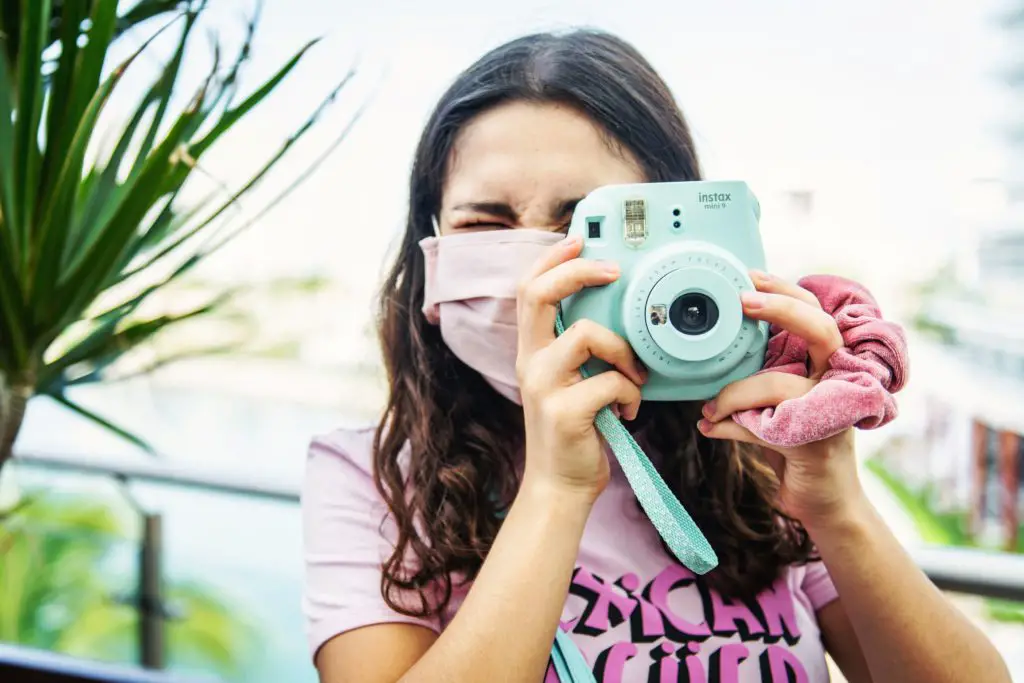
Instax Mini 9
The Instax Mini 9 was created as an update to the Instax Mini 8 and is similar to the 8+ and comes in 14 different colors but some are difficult to find and cost you more than others. You can can find most, if not all, of the colors and styles on Amazon.com but only certain colors are available packaged with film. Some of the colors include: Cobalt Blue, Lime Green, Black, Light Gray, Yellow, Ice Blue, Smokey White, Flamingo Pink, Arcadia Green, Clear Pink, Purple/Pink, and Purple. There are also Disney themed models based around Toy Story 4, Frozen II, and Star Wars available.
The camera weighs 10.8 ounces (without film and batteries), has a built-in flash, has a focal length of 60mm (roughly equivalent to 35mm on a full frame camera), shutter speed of 1/60th, a selfie mirror next to the lens to make selfies easier, and a close-up lens attachment to shoot up to 13.5 inches (35cm) away from your subject, and a flash range of about 2 – 8.5ft (0.6m – 2.7m). You can set the exposure using the brightness dial yourself or let the camera automatically adjust the exposure level for you using different aperture settings. It is powered by 2 AA batteries and you will get about 100 shots out of those. On Amazon, at the time of writing the Instax Mini 9 in Ice Blue sells for $107.95 with batteries and 60 sheets of film.
of 60mm (roughly equivalent to 35mm on a full frame camera), shutter speed of 1/60th, a selfie mirror next to the lens to make selfies easier, and a close-up lens attachment to shoot up to 13.5 inches (35cm) away from your subject, and a flash range of about 2 – 8.5ft (0.6m – 2.7m). You can set the exposure using the brightness dial yourself or let the camera automatically adjust the exposure level for you using different aperture settings. It is powered by 2 AA batteries and you will get about 100 shots out of those. On Amazon, at the time of writing the Instax Mini 9 in Ice Blue sells for $107.95 with batteries and 60 sheets of film.
Read this guide for tips on using the Instax Mini 9 or this guide about troubleshooting the most common problems with the Instax Mini 9
or this guide about troubleshooting the most common problems with the Instax Mini 9 .
.
Instax Mini 11
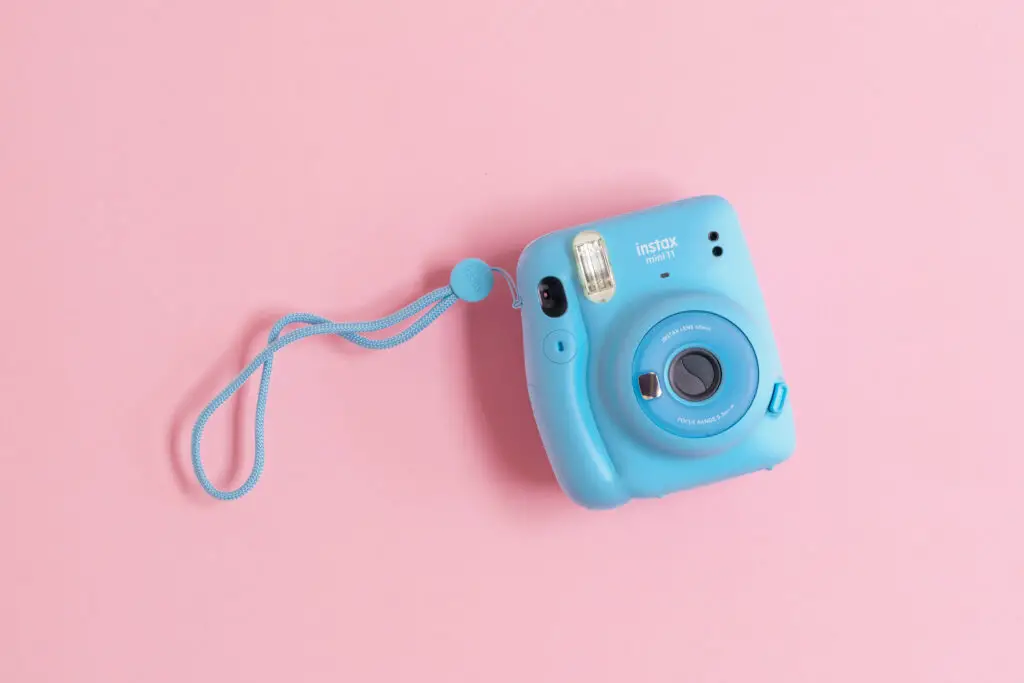
The Instax Mini 11 was Introduced as an update to the Instax Mini 9 and comes in 5 different colors but some are difficult to find and are different prices. You can can find most, if not all, of the colors and styles on Amazon.com but only certain colors are available packaged with film. Some of the colors include: Blush Pink, Ice White, Sky Blue, Lilac Purple, and Charcoal Grey.
The camera weighs 10.3 ounces (without film and batteries), is slightly slimmer than the Instax Mini 9, has a focal length of 60mm (roughly equivalent to 35mm on a full frame camera), shutter speeds of 1/2 to 1/250sec and slow synchronization for low light controlled by the camera, has a built-in flash, a selfie mirror next to the lens to make selfies easier, built in selfie-mode that allows you to focus between 11 inches – 19.5 inches (0.3m to 0.5m) from the camera, and a flash range of about 1 – 8.5ft (0.3 to 2.7m). The camera automatically calculates the exposure level for you along with the flash for brighter backgrounds than other Instax Mini cameras. It is powered by 2 AA batteries and you get about 100 shots out of those.
On Amazon, at the time of writing the Instax Mini 11 in Charcoal Gray sells for $109.95 and comes with 4 AA batteries and 60 sheets of film.
Read this guide for tips on using the Instax Mini 11 or this guide about troubleshooting the most common problems with the Instax Mini 11
or this guide about troubleshooting the most common problems with the Instax Mini 11 . You can find the Instax Mini 11 manual
. You can find the Instax Mini 11 manual for other information.
for other information.
Instax Square Cameras

 camera
cameraThe Instax Square series of cameras are the only Instax cameras that can take square film that is similar to Polaroid film . Unfortunately, Instax Square film is slightly smaller than old and new Polaroid film with Polaroid SX-70, 600 and i-Type film measuring 4.233 x 3.483 inches and Instax Square measuring 2.83 x 3.39 inches so you can’t use Instax Square in Polaroid cameras or Polaroid film in Instax Square cameras. In fact, the new polaroid film is actually thicker than the original so you can only get 8 sheets in a pack vs Instax 10-sheet pack.
. Unfortunately, Instax Square film is slightly smaller than old and new Polaroid film with Polaroid SX-70, 600 and i-Type film measuring 4.233 x 3.483 inches and Instax Square measuring 2.83 x 3.39 inches so you can’t use Instax Square in Polaroid cameras or Polaroid film in Instax Square cameras. In fact, the new polaroid film is actually thicker than the original so you can only get 8 sheets in a pack vs Instax 10-sheet pack.
There are several versions of the Instax Square camera including the Instax SQ6, instax SQ10, Instax SQ20, and Instax SQ1. See this website for a more exhaustive list of the Instax Square cameras. The Instax SQ10, and Instax SQ20 are hybrid instant cameras that have a digital display on the back to let you choose and edit the images to print using Square Instax film. They also have internal memory and a micro SD card slot to save your images or transfer them to a laptop. However, these hybrid Instax cameras are becoming increasing hard to find, more expensive, and have effectively been replaced by the non-hybrid versions of instant cameras in the Instax Square series which are the instax SQ1 and Instax SQ6, with the Instax SQ1 being the most current.
for a more exhaustive list of the Instax Square cameras. The Instax SQ10, and Instax SQ20 are hybrid instant cameras that have a digital display on the back to let you choose and edit the images to print using Square Instax film. They also have internal memory and a micro SD card slot to save your images or transfer them to a laptop. However, these hybrid Instax cameras are becoming increasing hard to find, more expensive, and have effectively been replaced by the non-hybrid versions of instant cameras in the Instax Square series which are the instax SQ1 and Instax SQ6, with the Instax SQ1 being the most current.
The Instax SQ1 camera comes in three colors: Glacier Blue, Chalk White, and Terracotta Orange and at the time of writing costs $119 for the just camera by itself or $139.99 for the camera and of 20 sheets of film. The SQ1 Instax camera does not have a tripod mount but it does have a f/12.6 aperture, a programmed electronic shutter 1/2 to 1/400 sec with a slow synchro for low light, and a focal length of 65mm. The camera can focus from 11.8 inches (0.3m) to infinity and has a selfie mode that allows the camera ,when activated, to focus from 11.8 – 19.6 inches (0.3m to 0.5m). The camera has built-in flash that has an effective flash range of about 1 – 7.2 feet (0.3 to 2.2m) and charges quickly. It is powered by 2 CR2 batteries and has an auto off function after 5 mins of not using it The camera is 5.3 x 4.6 x 2;2 inches (130.7 mm × 118.6 mm × 57.5 mm) and weighs 13.7 oz (390g) without the batteries and film pack.
Compared to the Instax Mini cameras and film, the Instax Square cameras are larger and heavier, cost more money, take a different type of battery (2 CR2s vs 2 AAs), have a similar aperture size, slightly narrower focal length (65mm vs 60mm), the film is more expensive, and doesn’t come in as many colors and styles as the Instax Mini cameras. However, it does have a better shutter speed range and close focusing ability than the Instax Mini cameras.
Instax Wide Camera
There is currently only one version of the instax Wide camera that Fujilm sells, at the time of writing the Instax Wide 300 in black for $88.22 and a white version for $108.99 on Amazon. See this website for a more exhaustive list of the Instax Wide cameras.
for a more exhaustive list of the Instax Wide cameras.
The Instax Wide 300 camera has a tripod socket for attaching a tripod, a focal zoom dial, rear-mounted LCD and brightness control buttons on the back of the camera for easy access. It has an f/14 aperture, electronic shutter release between 1/64 sec – 1/200, and a focal length of 95mm. The focal zoom dial has two modes – one that can zoom from 0.9m – 3m (normal mode / portraits) and for 3m – infinity (landscape mode). Using the close up lens, you can focus up to 15 inches (40cm) from your subject. The camera has built-in flash with a red flash indicator that charges between 0.2 – 6 seconds, fill-in flash mode for back-lit scenes, and has an effective flash range of 0.9 – 3 meters. It is powered by 4 AA-type batteries and is on the larger / heavier side compared to the other Instax models at 6.6 x 3.7 x 4.7 inches (167.8mm x 94.7mm x 120.9mm) and weighs 1.3 pounds (612g) without the batteries and film pack.
Compared to the Instax Mini cameras and film, the Instax Wide cameras are much larger and heavier, cost more money, take double the amount of batteries (4 AA vs 2 AA), has a smaller aperture (f14 vs f12.7), narrower focal length (95mm vs 60mm). the film is more expensive, and doesn’t come in as many colors and styles as the Instax Mini cameras. However, it does have way more creative controls in regards to exposure compensation and flash than the Instax Mini do and the resulting image is twice the size of Instax Mini film.
How Does Instant Film Work?
Instax Mini instant film works the same as the other instax instant films (including polaroid instant film). It is a totally unique process that holds a film developing lab in each sheet of film. Instax and Polaroid film are the only instant film available on the market that work similarly. There are other “instant” film, like Zink paper , but it is really just prints out the image rather than actually developing in front of your eyes in light like instant film.
, but it is really just prints out the image rather than actually developing in front of your eyes in light like instant film.
Tom Harris has this great article on how instant film works which explains how an instant image is created using the special film.
which explains how an instant image is created using the special film.
Instant film has three main components: the film, the casing, and the reagent. The film is just normal camera film, and the casing is also essentially just a plastic sheet. The reagent is where the magic happens. The reagent contains chemicals, like alkali, to neutralize the acids in the film, as well as an opacifier and other important bits. Chemical used in instant film can be toxic so it’s important to handle them with care.
so it’s important to handle them with care.

The reagent usually lies dormant in the corners and edges of the card, but once the picture has been taken, the camera quickly pushes the photo through two rollers, which squeeze the casing out onto the film. The reagent and the film then react together to rapidly develop the picture.
By the time the opacifiers have been fully de-opacified, which usually takes about 1 – 3 minutes (depending on the temperature of your environment) your picture is ready to view! The amazing thing is that this process only takes a few moments rather than the several hours and specialized equipment / chemicals that of other types of film require such as black & white and color film.
that of other types of film require such as black & white and color film.
Fujifilm Instant film Vs Polaroid Film
Fuji’s instant film products were also designed to be superior to the Polaroid cameras and film sold in the 1970’s and 1980’s. The major reason that Fuji’s instant cameras and film are different is because of the reversal of the dye layers’ order so that development in the blue layer is visible first. As a result, the image does not need to be reverse and therefore eliminates a reflex mirror that most Polaroid cameras, including Polaroid integral and SLR 35mm film cameras, have built in.
that most Polaroid cameras, including Polaroid integral and SLR 35mm film cameras, have built in.
Fujifilm was also able to improve color balance and tonal range over Polaroid instant film through chemistry and lenses used in their products. Fujifilm also decided to add pressure plate springs and batteries into the camera bodies rather than the disposable film pack itself also helps to make Instax film cost less per exposure than Polaroid instant film.
Is Instant Film Dangerous?
While instant film, like Instax, does contain a toxic caustic / corrosive chemical such as alkali, but it is in such low quantities and the film is designed so that the only way it would hurt would be to cut open the photo and lick the contents.
such as alkali, but it is in such low quantities and the film is designed so that the only way it would hurt would be to cut open the photo and lick the contents.
It’s generally a bad idea to put Instax photos in your mouth since you never know whether a little bit of alkali has leaked out or not, not to mention all of the other chemicals used to develop the image on the film.
The chemicals in instant film like Instax can also cause some irritation or itching of the skin if you come in direct contact with it. If your skin does come in contact with chemicals from Instax, Fujifilm recommends washing the area that was exposed with soap and water.
How Long Does Fujifilm Instax Film Last?
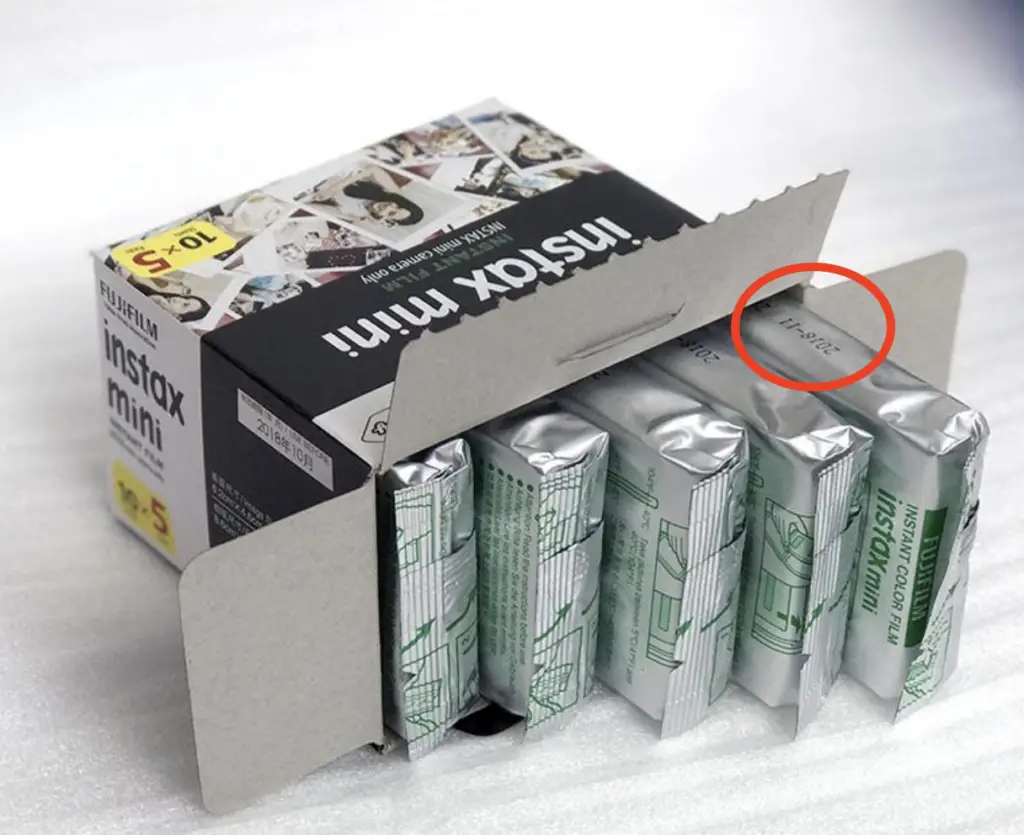
Each pack of Instax film has an expiration date printed on either the foil pack itself or the box it came it. Regardless of the date, it’s uncommon for the unused film to last for longer than two years. Because of this, Fujifilm recommends using your Instax film within a year of buying it for best results.
If you have the film loaded into your camera, Fujifilm recommends using the film within 2 weeks for best results .
.
How long the unused film lasts also depends on how and where you store your Instax film . Direct sunlight will cause damage to the film before it’s been used (and after), high humidity can cause more mechanical kinds of damage to pictures, and high heat will damage your film. This is why it’s so important to keep your pictures in a cool, dry place and out of sunlight. This doesn’t mean you should dehumidify them either. In fact, putting them around a dehumidifier may cause the chemicals inside the film to dry up and ruin the film.
. Direct sunlight will cause damage to the film before it’s been used (and after), high humidity can cause more mechanical kinds of damage to pictures, and high heat will damage your film. This is why it’s so important to keep your pictures in a cool, dry place and out of sunlight. This doesn’t mean you should dehumidify them either. In fact, putting them around a dehumidifier may cause the chemicals inside the film to dry up and ruin the film.
Do Instax Pictures Fade Over Time?
If your Instax prints are stored in the correct manner, they should last longer than 80 years (but no one knows exactly how long it will last). Instax prints need to fully dry for a few months before they can be stored and kept in a cool dry place and out of direct sunlight. I recommend storing them in a acid-free archival storage box like this one for sale on Amazon.com.
You will want to store them flat and also avoid cutting the pictures since it will expose the interior film to the air, which will cause it to deteriorate at a much faster rate than normal, regardless of where you store them. Since cutting the photographs can also cause the alkali chemicals inside to leak out onto your hands, it’s probably for the best to not cut Instax prints.
Of course, sunlight is once again the most likely culprit for damage here. Even though modern Instax film is a lot tougher than Polaroid instant film of the past, leaving your photo out in direct sunlight will cause it to deteriorate much faster than normal.
See this guide on how to store Instax Film and keep it from fading .
.
Can I Laminate Instax Photos?
Although Instax film is already laminated, one way to protect your Instax images is to laminate them again. Laminating instant film won’t harm your images but keep in mind this won’t protect your Instax film from sunlight but they will be protected from spills and other dirt and grime. Also, laminating the photos will make them significantly easier to keep clean if they are being handled.
How Long Does It Take An Instax Film to Develop?
On average it takes about 90 seconds for an Instax photo of any size to develop. However, in my experience the development time can be affected depending the temperature of your environment. For example, if the environment is colder it may develop slower and if your environment is warmer it may take a shorter amount of time.
See the image timelapse below to see what Instax Mini film (and other Instax film) looks like developing over 90 seconds:
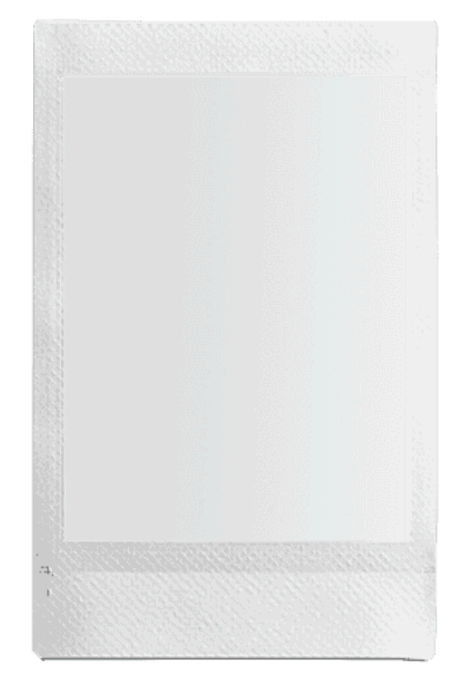
Can You Use Fujifilm Instax Film With a Polaroid Camera?
The only Polaroid camera is capable of using Instax mini film is the Polaroid 300 instant camera, which looks and functions almost identical to an Instax Mini line of cameras (like the Instax Mini 25). This also means that the Instax Mini cameras is compatible with Polaroid 300 instant film.
However, I don’t recommend buying Polaroid film for your camera because it is more expensive and harder to find for sale than the instax mini film. Polaroid film is also not as consistent as Instax film so my recommendation is that if you have a Polaroid 300 instant camera just buy the Instax Mini film to save money and have more consistent images.
Where Can I Buy Instax Film?
Fujifilm has a way to locate places that sell Fujifilm Instax film here but I have found that any brick and mortar stores like Walmart, Target, CVS, Staples, and Walgreens that carries Instax cameras are also likely to carry Instax film in store as well as online. Camera specific stores also tend to carry Instax film, if you are lucky to have one located near you. See a list of online camera stores here
but I have found that any brick and mortar stores like Walmart, Target, CVS, Staples, and Walgreens that carries Instax cameras are also likely to carry Instax film in store as well as online. Camera specific stores also tend to carry Instax film, if you are lucky to have one located near you. See a list of online camera stores here that also have physical locations in the US.
that also have physical locations in the US.
You can also find instax film at the following online stores:
However, you do need to be careful of buying from online stores because you may not know how the film was stored (especially if it was not stored in a cool and dry place) and it can affect performance and consistency of your images.
See this guide for more information about  w
w h
h e
e r
r e
e
 t
t o
o
 buy Instax Film
buy Instax Film for cheap.
for cheap.
How Much Does Instax Film Cost?
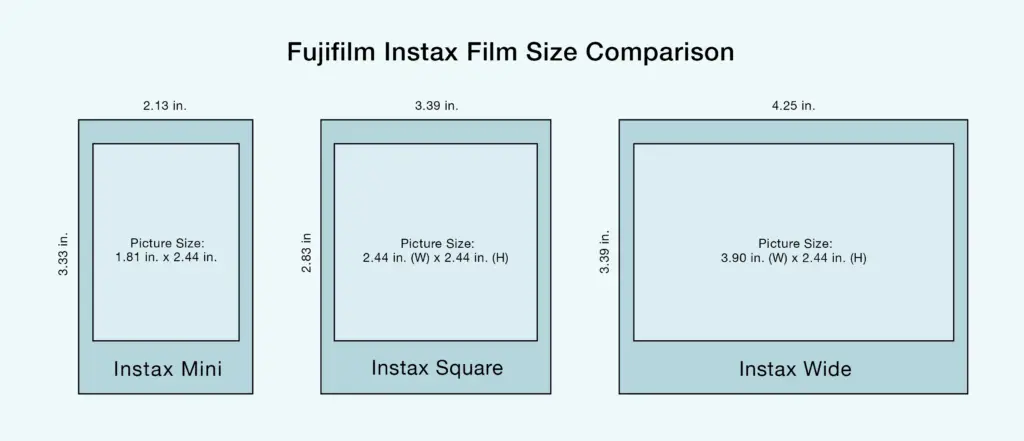
While Instax film can seem more expensive than traditional film, with Instax instant film you don’t need to purchase all the specialize chemicals and equipment to develop traditional film so it actually is cheaper in the long run. With instant film, Instax film is cheaper than polaroid and has more consistent results. Below is more information about the cost of the different types of Instax film and how to save some money by buying in bulk.
so it actually is cheaper in the long run. With instant film, Instax film is cheaper than polaroid and has more consistent results. Below is more information about the cost of the different types of Instax film and how to save some money by buying in bulk.
Instax Mini Film
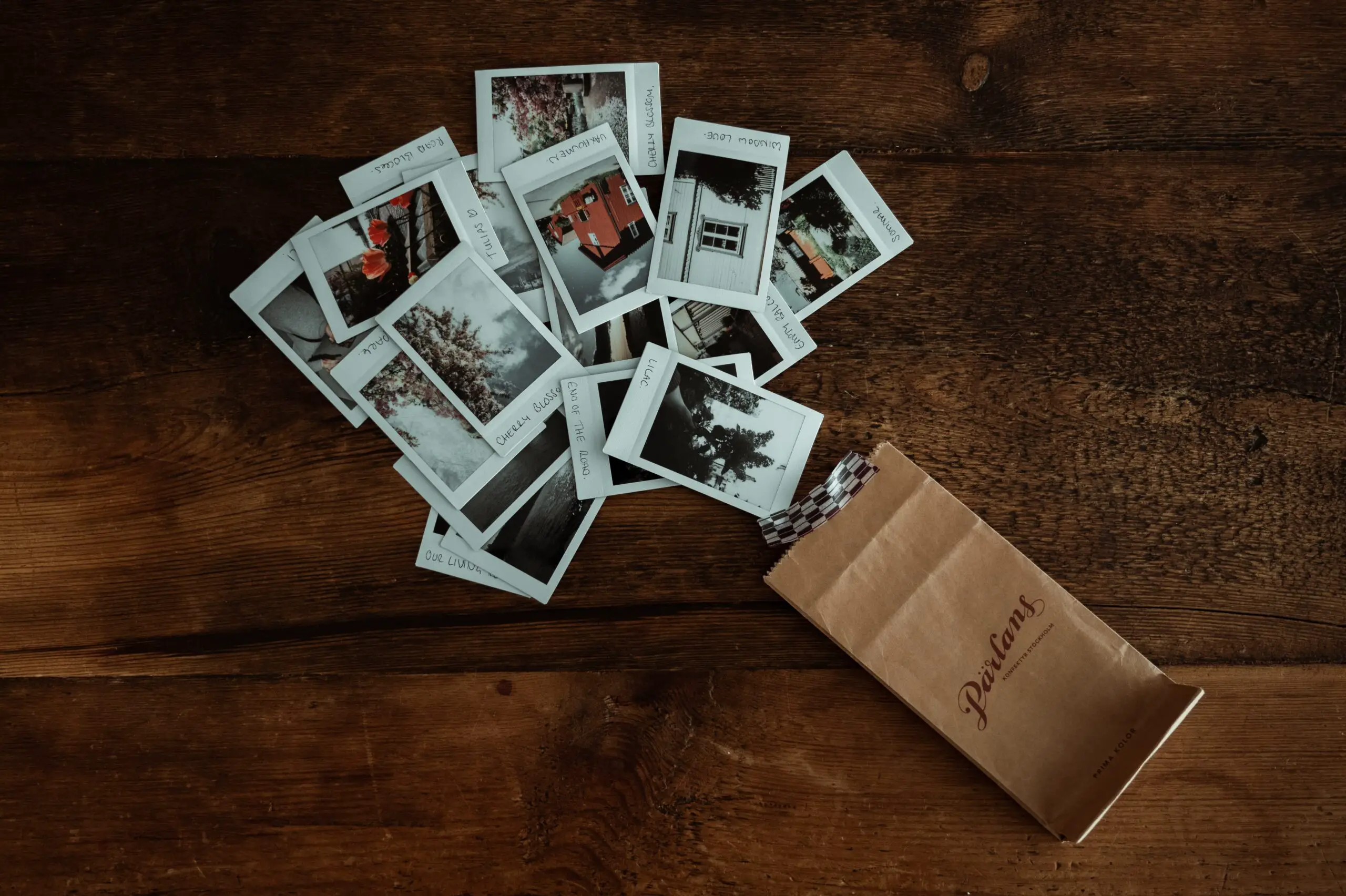
Although Instax Mini film comes in both color and monochrome (black & white) and a variety of other styles and colors, the best price for Instax Mini film is for the color film with a white border for $16.19 for 20 sheets of film at the time of writing. This works out to be around $.80 a sheet.
However, for a much better deal, purchase instant film in larger, bulk package sizes to save the most money. For example, you can get Instax mini film in color and white borders for $40 for 60 sheets on Amazon.com at the time of writing, which works out to be around $.66 a sheet. You can also get a even better deal by paying more money at once at $239.80 for 400 sheets of film on Amazon.com, which works out to be around $.59 a sheet.
Instax Square Film
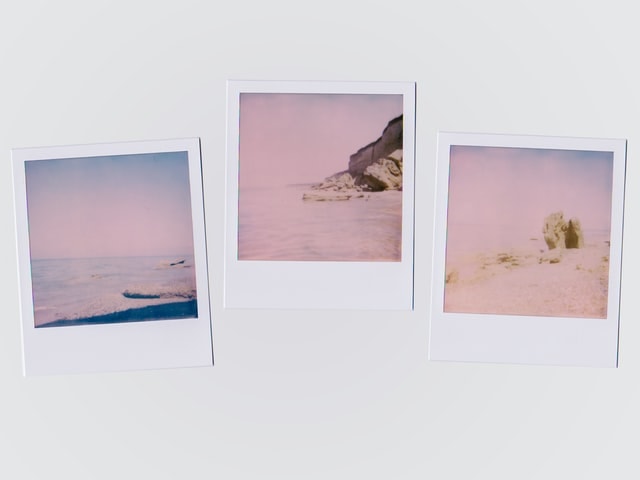
Instax square film comes in color and monochrome (black & white) and a variety of styles and colors, but the best price for Instax Square film is for the color film with a white border for $19.95 for 20 sheets of film at the time of writing. This works out to be around $.99 a sheet.
However, for a much better deal, purchase instant film in larger, bulk sizes to save the most money. For example, you can get Instax Square film in color and white borders for $107.50 for 100 sheets on Amazon.com, which works out to be around $1.07 a sheet.
Instax Wide Film
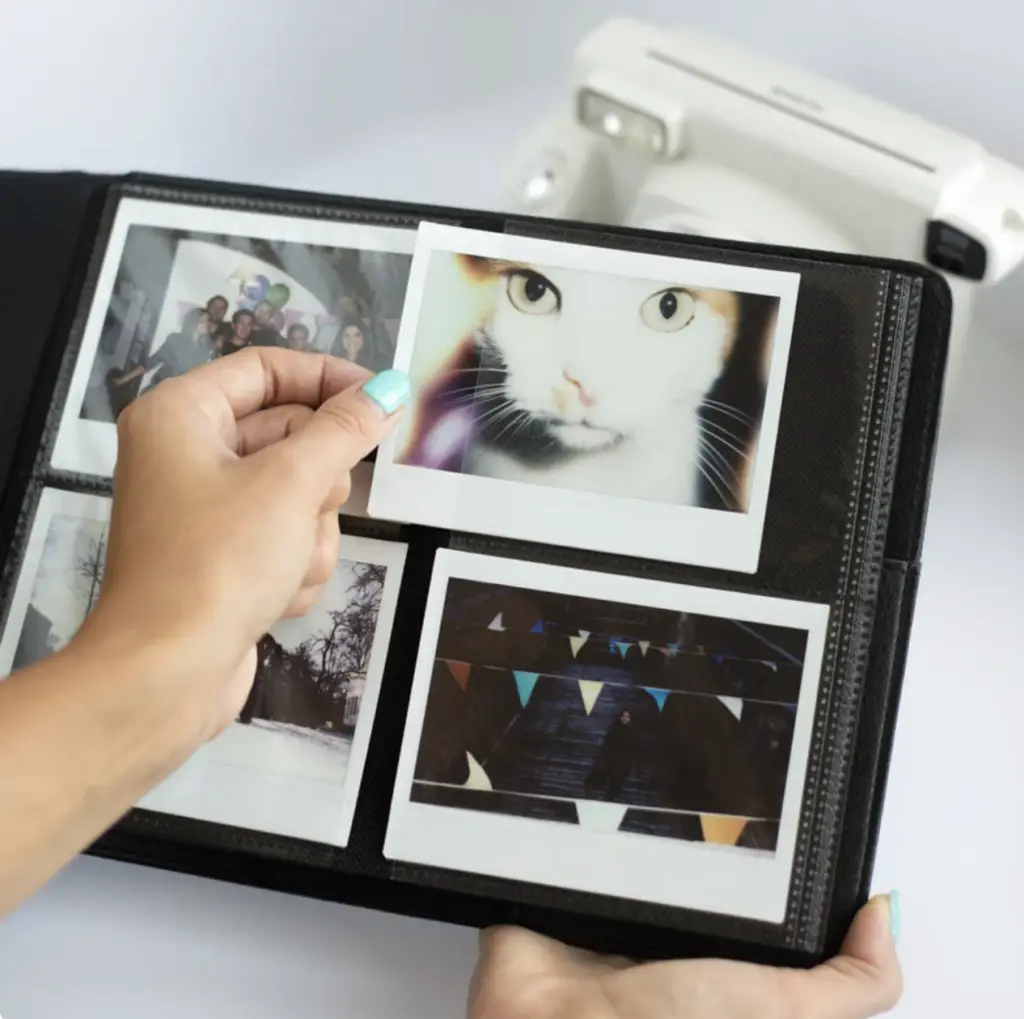
 )
)Instax Wide film comes in a color, monochrome (black & white), and color with a black border. The best price for Instax Wide Film is for the color film with a white border for $16.99 for 20 sheets of film at the time of writing. This works out to be around $.84 a sheet.
However, for a much better deal, purchase instant wide film in larger, bulk sizes to save the most money. For example, you can get Instax Wide film in color and white borders for $69.95 for 80 sheets on UniquePhoto.com , which works out to be around $.87 a sheet.
, which works out to be around $.87 a sheet.
Where Is Fujifilm Instax Manufactured?
While a majority of Fujfifilm Instax film and cameras are made in Japan and China. Fujifilm does have a US factory in Greenfield, South Carolina. The Greenwood facility covers 500 acres and employs over 500 people. The facility has been acclaimed for being comparatively environmentally friendly and has been operating since 1998. The US manufacturing center sends products out to over forty countries in addition to the United States. The facility produces QuickSnap recyclable cameras, inkjet photographic paper, color photographic paper, and digital printing plates
covers 500 acres and employs over 500 people. The facility has been acclaimed for being comparatively environmentally friendly and has been operating since 1998. The US manufacturing center sends products out to over forty countries in addition to the United States. The facility produces QuickSnap recyclable cameras, inkjet photographic paper, color photographic paper, and digital printing plates .
.
How to Load Instax Film Into Your Instax Camera.
Although loading film into instax cameras is an overall easy process, the steps are slightly different depending on the camera. See each types below for instructions:
How to Load Instax Mini Film Into Your Instax Mini Camera
Adding Instax film to an Instax camera is easy. This company makes their cameras very user-friendly and it is simple to add film into your camera. Some instax cameras are slightly different but in general the follow steps will show you how to put film in an instax camera.
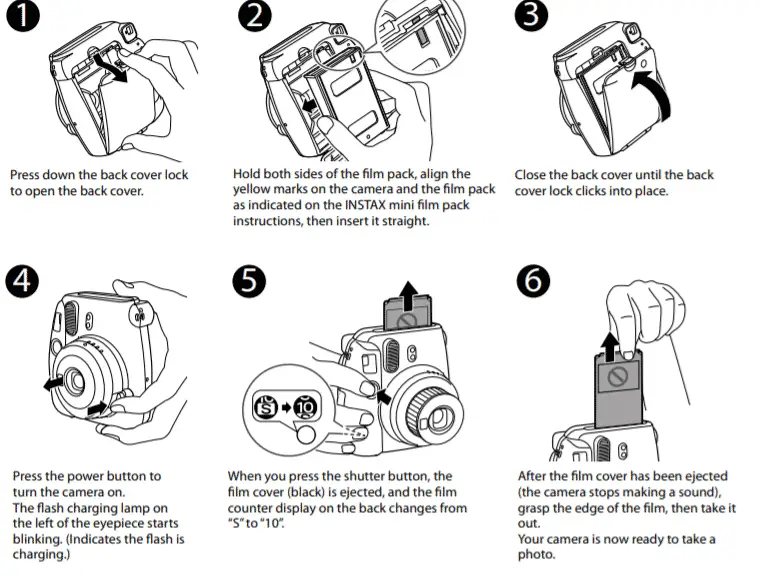

1. Recharge or Replace the battery, if necessary.
If your camera doesn’t work, you will need to recharge the camera or insert new batteries. Almost all Instax cameras use AA batteries (except the Mini 25, Mini 50s, and Mini 70 which all use CR2 batteries and Instax Mini LiPlay which has a internal rechargeable battery). The Instax Wide camera used 4 AA batteries and most of the Instax Square cameras use 2 CR2 batteries.
2. Open the Film pack
Next, you need to open your new pack of film. Instax film comes in a box with a foil pouch inside. You will need to open the foil pouch to be able to insert the film into the camera. You can also find the expiration date printed on the foil pouch. Instax films expire one year after the expiration date.
3. Put Film Inside Camera
After you take the film out of the foil bag, you need to open the film compartment and take out the plastic holder left from the previous film and place the new film into the camera (some people like to keep the plastic film holder to store film). Follow the directions above to place the film into the camera the correct way, then close the compartment.
4. Eject the Black Slide
Now you need to turn on your camera and watch for the lens to pop out and for the flash charging light to activate. This means your camera is on. Then, when you think the other steps are completed correctly, press the shutter button to eject the film cover.
5. The Camera Is Ready
When the black film cover has been ejected out the camera, it will stop making a sound and the film counter on the back should change from “S” to “10”. Take hold of the edge of the film cover and pull it out. The film cover can be thrown away at this point and the camera is ready to take a photo!
How to Load Instax Square Film Into Your Instax Square Camera
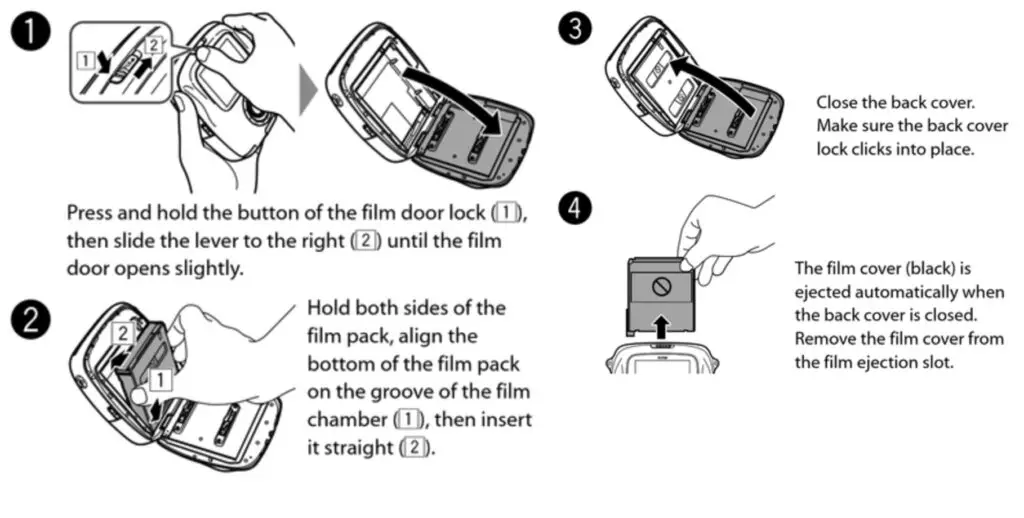
1. Recharge or Replace the battery, if necessary.
If your camera doesn’t work, you will need to recharge the camera or insert new batteries. Almost all Instax cameras use AA batteries (except the Mini 25, Mini 50s, and Mini 70 which all use CR2 batteries and Instax Mini LiPlay which has a internal rechargeable battery). The Instax Wide camera used 4 AA batteries and most of the Instax Square cameras use 2 CR2 batteries.
2. Open the Film pack
Next, you need to open your new pack of film. Instax film comes in a box with a foil pouch inside. You will need to open the foil pouch to be able to insert the film into the camera. You can also find the expiration date printed on the foil pouch. Instax films expire one year after the expiration date.
3. Put Film Inside Camera
After you take the film out of the foil bag, you need to open the film compartment and take out the plastic holder left from the previous film and place the new film into the camera (some people like to keep the plastic film holder to store film). Follow the directions above to place the film into the camera the correct way, then close the compartment.
4. The Camera Is Ready
When you close the back of the camera, the black film cover will automatically eject out the camera, it will stop making a sound and the film counter on the back should change from “S” to “10”. Take hold of the edge of the film cover and pull it out. The film cover can be thrown away at this point and the camera is ready to take a photo!
How to Load Instax Wide Film Into Your Instax Wide Camera
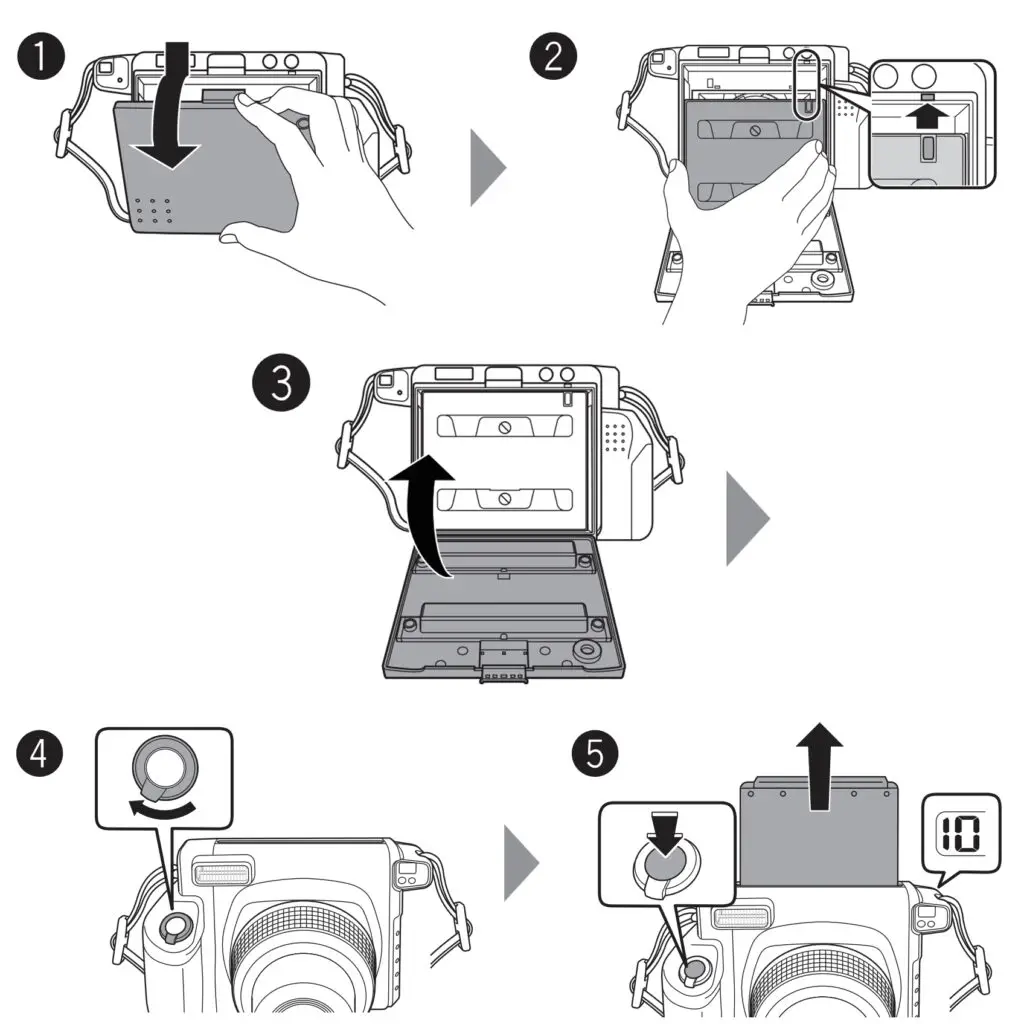
1. Recharge or Replace the battery, if necessary.
If your camera doesn’t work, you will need to recharge the camera or insert new batteries. Almost all Instax cameras use AA batteries (except the Mini 25, Mini 50s, and Mini 70 which all use CR2 batteries and Instax Mini LiPlay which has a internal rechargeable battery). The Instax Wide camera used 4 AA batteries and most of the Instax Square cameras use 2 CR2 batteries.
2. Open the Film pack
Next, you need to open your new pack of film. Instax film comes in a box with a foil pouch inside. You will need to open the foil pouch to be able to insert the film into the camera making sure to light up the mark on the film pack and the inside of your camera so it inserted the correct orientation. You can also find the expiration date printed on the foil pouch. Instax films expire one year after the expiration date.
3. Put Film Inside Camera
After you take the film out of the foil bag, you need to open the film compartment and take out the plastic holder left from the previous film and place the new film into the camera (some people like to keep the plastic film holder to store film). Follow the directions above to place the film into the camera the correct way, then close the compartment.
4. Eject the Black Slide
Now you need to turn your camera on by rotating the dial around the shutter button. Then, when you think the other steps are completed correctly, press the shutter button to eject the film cover.
5. The Camera Is Ready
When the black film cover has been ejected out the camera, it will stop making a sound and the film counter on the back should change from “S” to “10”. Take hold of the edge of the film cover and pull it out. At this point, the film cover can be thrown away and the camera is ready to take a photo!
Common Questions About Instax Film
Below are the answers to common questions about Instax film:
Can You Use Instax Mini Film In Instax Wide?
No, you cannot use Instax Mini Instant film Film in a Instax Wide camera. Fujifilm makes three sizes of Instax film along with corresponding cameras: Instax Mini, Instax Square, and Instax Wide. Unfortunately, all of the film sizes cannot be used in the other cameras. Of the three Instax sizes, I recommend Instax Mini because it is the cheapest film of the three, it is offered in many more styles and kinds of film, and there are much more different Instax Mini cameras to choose from.
See this guide on Instax Mini cameras and film for more information.
for more information.
Why Are My Instax Pictures Blurry?
There are 4 reasons why your Instax images are blurry:
- The correct exposure setting was not chosen and the image got too much light and is overexposed
- The exposure meter (the two holes just above the lens on the front of the camera) is covered and caused the camera to choose a long shutter speed which blurred the image
- Not enough light in the area you are taking the image and the flash didn’t go off
- You are using expired film. See this guide on how to know if your Instax film is expired
 .
.
What Film Does Fujifilm Instax Use?

All Fujifilm Instax cameras use Fujifilm Instax Instant Film. It is called instant film because the film, once taken will eject from the camera and develop in front of your eyes between 90 seconds – 5 minutes.
Fujifilm makes three different sizes and many different kinds and styles including color and monochrome film. The three sizes of Instax film is Instax Mini, Instax Square, and Instax Wide. Below is a list of Instax Cameras the film it uses:
- Instax Mini Cameras: Uses Fujifilm Instax Mini film
 (it can also use Polaroid 300 instant film which is the same as Instax Mini film
(it can also use Polaroid 300 instant film which is the same as Instax Mini film but more expensive)
but more expensive)
- Instax Square SQ6, SQ10, SQ20, SQ1 Cameras: Uses Fujifilm Instax Square Film
- Instax Wide 210 / 300 Cameras: Uses Fujifilm Instax Wide Film
Related article: How Do I Know When My Instax Camera Is Empty?
What ISO Is Instax Film?
All Instax films, including Instax Mini, instax Square, and Instax Wide, are rated at 800 ISO which makes the film perfect for multiple lighting conditions and for use with a flash. All Instax film is also glossy / shiny (including the monochrome versions) and balanced for daylight.
Should I Keep Instax Film In The Fridge?
As long as the film is still in the foil, it’s safe as long as you keep it in the cool, dry place out of direct sunlight but once it’s taken out of its foil pack the film will start to deteriorate fairly quickly so you want to load it into your camera and use it up within a couple weeks.
While it isn’t necessary to store your packs of film in the fridge, if you don’t plan on using the entire box of instant film all at once, you can put the extras packs in the fridge to help them last just a little longer.
When you are ready to use the film packs that you’ve put into the fridge for storage, you should wait for at least 8 hours before taking it out of the foil pack and loading it into the camera. This is so the film can get back to room temperature and produce consistent results.
Should I Keep Instax Film In The Freezer?
While it is okay to store your Instax film in the refrigerator if you don’t have access to a cool, dry place out of the direct light to store it. DO NOT store instant film in the freezer as it will ruin the film. Just keep it stored in a cool, dry place out of direct sunlight and use it within 2 – 3 years after the expiration date.
Can I Bring Instax On Plane?
Yes, instant cameras can be taken on a plane but beware that the scanners at airport security (and other places) will damage your undeveloped instant film.
It used to be that most X-ray machines found in airports would not cause damage to unexposed instant film unless the film is subjected to repeated x-rays. The rule was that film up to 800 speed (which Instax film is rated) can go through x-ray unfazed and it was not recommended to allow film of higher speeds, like 3200 ISO to pass through x-rays. However, there are new, stronger airport scanners like the TSA CT scanners that will damage undeveloped instant film on the first run through.
that will damage undeveloped instant film on the first run through.
Here are a few tips for taking your Instax camera on an plane are:
- Try to identify how many times you’ll have to pass through airport security on your trip
- If possible, obtain a lead-lined bag (like this one from Domke on Amazon.com)
- Always keep your camera loaded with film and any undeveloped instant film with your carry-on luggage because checked bags gets more x-ray exposure than carry-on luggage
- Ask for your camera loaded with film and undeveloped instant film to be hand-checked. Be aware this might slow you down going through security so give yourself plenty of time
See this article about how to travel safely with Instax film .
.
Will TSA Ruin My Instant Film?
Yes, TSA will ruin your instant film because the scanners used to scan carry-on and checked bagged at an airport (and other places) are strong enough to ruin your undeveloped instant film so you shouldn’t take your instax film through security. Because of this, my recommendation is to keep your camera and film with your carry-on luggage, put your camera loaded with film and undeveloped instant film in a clear plastic bag, and ask for a handcheck. In my experience, TSA will most likely open the foil pouches that Instax film comes in so you may want to go ahead and open them yourself to save time going through.
The effects of an airport x-ray on instax Instant film is random white or dark stripes and the film will be fogged where the film will appear muddy and low contrast with hardly any detail in the shadows.
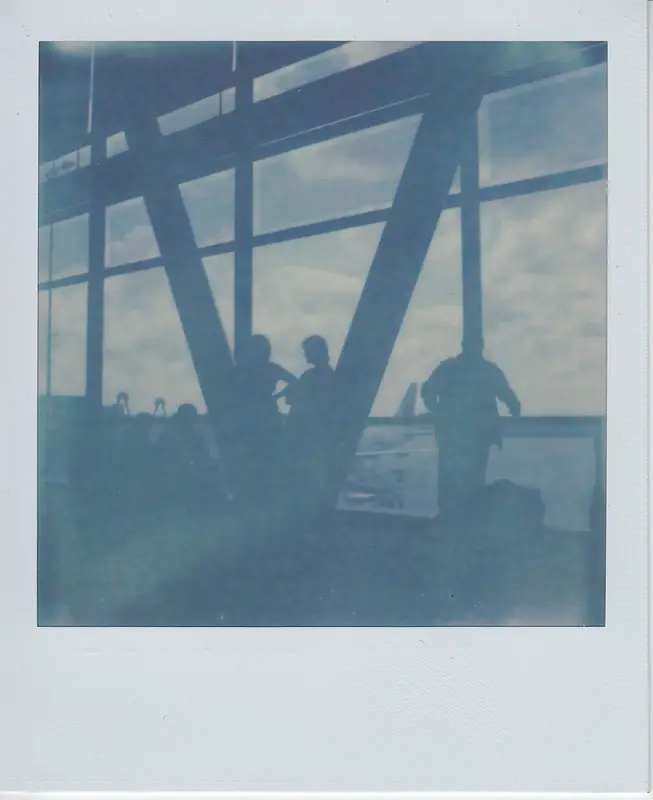
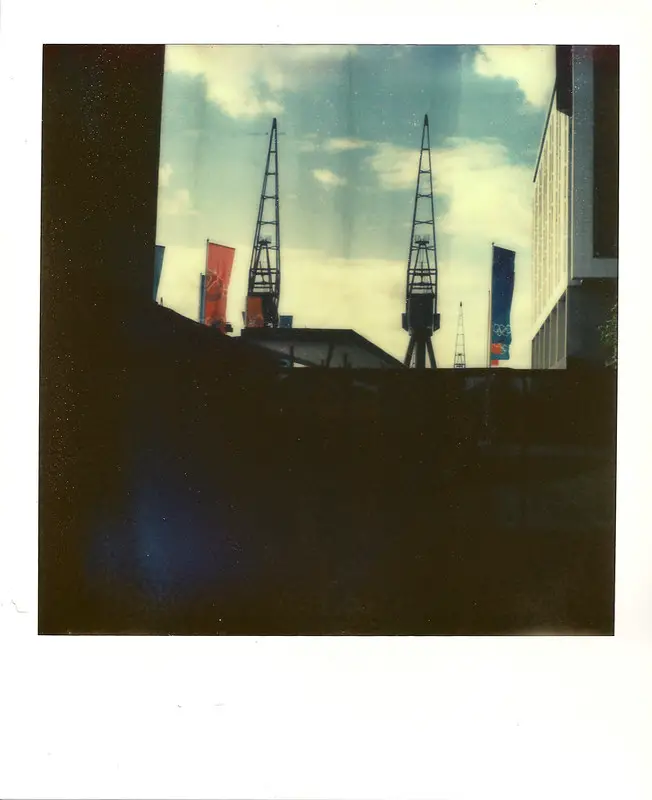
Why Are My Instax Pictures Coming Out White?
If your instax images are coming out white, this means that your camera is getting too much light or the film was exposed to light. There are generally 4 reasons your instax images are white:
- The brightness adjustment dial on the front of the camera is on the wrong setting
- The film door on the camera was opened after the film was loaded into the camera and the darkslide was ejected
- You are too close to your subject with the flash on
- The exposure meter (the two holes just above the lens on the front of the camera) is covered
Why Are My Instax Photos Dark?
 If your instax photo is too dark (or is underexposed) this means the camera isn’t getting enough light. This can be caused by 4 reasons:
If your instax photo is too dark (or is underexposed) this means the camera isn’t getting enough light. This can be caused by 4 reasons:
- The brightness adjustment dial on the front of the camera had the wrong setting (mostly likely cuprit)
- There wasn’t enough light where you took the image
- The flash didn’t go off / covered / isn’t working
- The exposure meter (the two holes just above the lens on the front of the camera) is covered
Should You Shake Instax Film?
No, you should not shake your Instax film because you could ruin the image. You may think that shaking your Instax film may speed of the development process but according to Fujifilm, the manufacturer of Instax film, shaking Instax film while it is developing could damage the development chemicals on the image, causing it not to spread evenly over the image and prevents the photo from developing correctly.
could damage the development chemicals on the image, causing it not to spread evenly over the image and prevents the photo from developing correctly.
In my experience, shaking the image after it comes out of the camera also may make the image blurry and/or cause feather-like patterns on the film. In addition, if you touch the image area while shaking it, you will cause spots on the image.
Related: What is the Best Way to Develop Instax Film?
Why Is My Fujifilm Camera Blinking Red?
If your Fujifilm Instax camera is flashing a red light, this is an indication that the flash on the camera is charging. Once it stops blinking the flash is fully charged and ready to take images again. However, if the light is not blinking and comes on for around 20 seconds then the batteries need to be replaced or recharged.
Almost all Instax cameras use AA batteries (except the Mini 25, Mini 50s, and Mini 70 which all use CR2 batteries. The Instax Mini Evo and Instax Mini LiPlay has a internal rechargeable battery). The Instax Wide cameras use 4 AA batteries and most of the Instax Square cameras use 2 CR2 batteries.
Related: 7 Most Common Problems with Your Instax Mini 9 Camera and How to Fix Them or 6 Most Common Problems With Instax Mini 11 & How To Fix Them
What Does S Mean On An Instax Camera?
If the film counter on your camera displays an “S” , this means your Instax camera has filmed loaded in your camera but hasn’t ejected the darkslide in the film packet yet. The most likely reason is that the batteries in the camera need to be replaced.
Replace the batteries in your instax camera (See this for what batteries your camera takes) You do this by turning on your camera and pressing the shutter release button (the button you use to take an image). Once you turn on the camera and press the shutter button, the camera will eject the darkslide from the film pack and display will show the amount of film in the camera instead of the letter “S”.
Related: Why Does my Instax Camera Say S?
How Do I Reset My Instax Film Counter?
If the film counter on your Instax camera doesn’t show the correct number of frames you will need to reset the film counter. The good news this is very easy and quick to do, however, the bad news it will waste one frame of film. Follow the steps below to reset the film counter on your Instax camera:
- Go into a room with little to no light, like a bathroom without windows and turn off the lights (this keeps your film from being ruined by being exposed to light)
- Open the film door on your camera and quickly close your film door
- The camera will eject one frame and the film counter will reset
Once you finish your film pack and insert more film, the film counter will reset to the correct number of frames.
Related: How Do I Know When My Instax Camera Is Empty?
What Happens When You Accidentally Open Your Instax Camera Film Door?
If you accidentally open your instax film camera door with film loaded in your camera you will most likely ruin your instant film by exposing it to light. The film counter will also reset once the film door is closed back again and the camera will eject one frame.
How many frames are exposed and ruined is determined by how long the film door was open and how much light was in the environment where you opened the film door. For example, if this was outside at noon and the film door was open for more than 30 secs, you could have ruined 2 frames – the entire film pack. However, if the film door was open for less than a few seconds in bright sunlight it’s possible only one frame was ruined and the rest of your instant film is fine. On the other hand, if you have opened your film door in a environment with low light and the film door was opened for only a few seconds before closing, it is possible your film is just fine.
Also, as mentioned in the questions above, when you open and close the film door the camera’s film counter will reset and eject one frame which is not that big of a deal since the film counter will correct itself once you insert a new film pack.
See this guide for more information on how to load film into your Instax camera .
.
Conclusion
Fujifilm Instax film and cameras are so much fun and can be magical when watching film develop in front of your eyes. Hopefully, this guide has provided you with more information about Instax cameras and film so you can learn how to use your own camera better or help you decide to purchase one!


